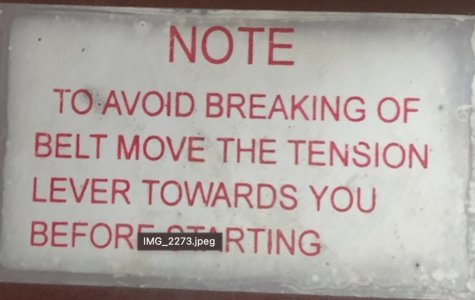Two items:
First: The intent of the instructions is to start the motor with the belt released. It probably has to do with a weak starting winding, cap, et al. I have started mine without releasing the belt for 20 years or more. I have destroyed the belt acouple of times, but with my homade pulleys, I attribute that as much to poor workmanship as wear. Keeping in mind that a belt will take a "set" if left tight during occasional use, it might be advisable to release the belt when not being used. Your photo of the belt routing is correct, BTW. Mine uses only one belt for both ranges. A matter of specific pulley sizes and motor mounting.
Second: There are occasions where reversing the lead screw has advantages. In "normal" use, one makes a cut from RIGHT to LEFT. If you desired to cut LEFT to RIGHT, you would need to do it by hand. An example would be dressing the left side of a part. Or, more significantly, cutting a LEFT HAND thread. The stock machine, as delivered, cannot to this. There are many articles on the web about making a "reverse tumbler". The only one that comes to my slim mind is a Steve Bedaire. Mine is built to a slim profile to provide clearance for the home brew planetary gear head. Most tumblers are thicker.
Reversing the motor has its' own purpose, not the least is so you can leave the threading engaged during multiple passes on metric gears. The lead screw on most imports is 16TPI. When doing metric threads, the threading gears must remain connected so that multiple passes remain in registration. A whole 'nuther subject, the rabbit hole gets deeper and deeper.
The "rabbit hole" is very deep, a novice machinist will spend more time asking questions than producing. This board is an excellent source of answers, but is only one of many. A key phrase is "The only stupid question is the one not asked".
.
 to keep asking, but what is the reverse switch for then? It does have reverse... The chuck switches direction... What am I not understanding??
to keep asking, but what is the reverse switch for then? It does have reverse... The chuck switches direction... What am I not understanding??


